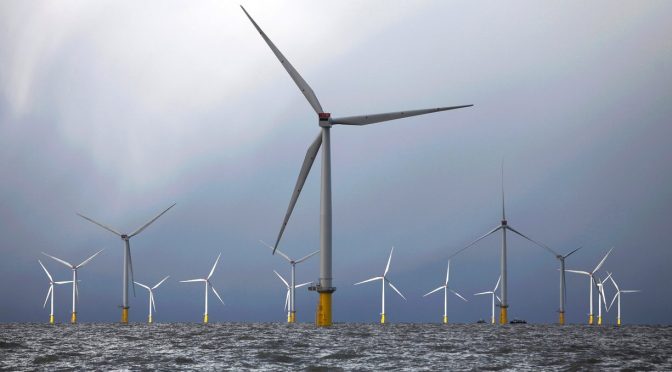ITPEnergised (ITPE), Ramboll and BMT Asia Pacific (BMT) have partnered since mid-2014 to provide Taiwan’s offshore wind industry with a series of guidelines for future developments around the island. The group of consultants have now delivered their third, and final, phase of guidelines to the local Taiwanese industry.
Funded by Taiwan’s Bureau of Energy, Ministry of Economic Affairs and commissioned by the Industrial Technology Research Institute (ITRI), which is supporting the industry as co-ordinator and the primary technical institute, this ITPE-led project has been producing recommendations based on best practice approaches and case studies from European industries whilst reflecting Taiwan’s policy, environmental conditions and industrial setting.Drawing on the related experiences of ITPE, Ramboll and BMT, the guidelines provide practical advice to local project developers and the Taiwanese Government, building on the group’s previous two sets of guidelines, and existing practices and standards.
The first phase of the project provided guidelines for the design and construction of offshore wind projects and was presented in November 2014. The second phase of the project, which finished in November 2015, focused on guidelines for operations and maintenance of offshore wind projects
During July 2016 consultants from the project team met with local Taiwanese developers and the wider sector to discuss a variety of topics associated with the planning and preparation of offshore wind. The timing of this work has been co-ordinated with the local Government’s move to a zonal allocation approach to project competitions and leasing. The Government originally offered 36 offshore areas, pre-selected by ITRI, for developers to apply for and undertake site studies and EIAs. Four of these sites have most notably been taken by DONG Energy. Subsequently, the latest phase of guidelines delivered by ITPE, Ramboll and BMT have covered aspects from both government and developer perspectives, and include guidance on: site selection, feasibility studies, marine spatial planning, policies and regulations, incentive mechanisms and environmental impact assessments.
The Government of Taiwan is actively promoting wind energy, with a particular focus on offshore development, as part of its aim to achieve around 14GW of renewable generation capacity by 2030. Taiwan’s heavy reliance on imported hydrocarbons, abundant offshore wind energy resource and onshore spatial constraints all act as key drivers for developing offshore wind capacity. The current plans are to establish at least two offshore wind demonstration projects and the first of the two 8MW demonstration projects has recently had its two Siemens 4MW turbines installed. These two demo projects will be joined by a third and subsequently be expanded to each by between 100 to 300MW capacity by the end of the decade. Macquarie and DONG have recently announced their investment into one of these demo projects, which is being developed by Swancor.
Joseph Hussey, ITPE’s Offshore Energy Group Manager says: “Taiwan is now at a stage where offshore wind projects are becoming a reality and both the government and industry are looking towards a longer pipeline of projects. These guidelines will help all stakeholders of the local sector to plan their development programmes and strategies effectively, and aid in the smooth transition to a new approach to issuing project concessions. We are looking forward to continuing our work with our project partners and the local industry as this exciting new market develops further.”
Dr Richard D Colwill, Managing Director of BMT Asia Pacific, comments: “By 2030 Taiwan intends to increase its overall wind power capacity (onshore and offshore) from the current ~600MW to 4,200MW under an ambitious renewable energy plan by the Ministry of Economic Affairs (MOEA). The guidelines delivered by ITPE, Ramboll and BMT are directly assisting developers in achieving these future targets in an efficient, cost-effective and risk aware manner.”
Ben Wysome, head of Ramboll’s offshore wind department in the UK, says: “We are delighted to have worked with ITPEnergised and BMT again to provide this final set of guidelines for ITRI. Taiwan has ambitious plans for offshore wind over the next few years and we are proud to be able to contribute to bringing offshore wind to Taiwan.”


